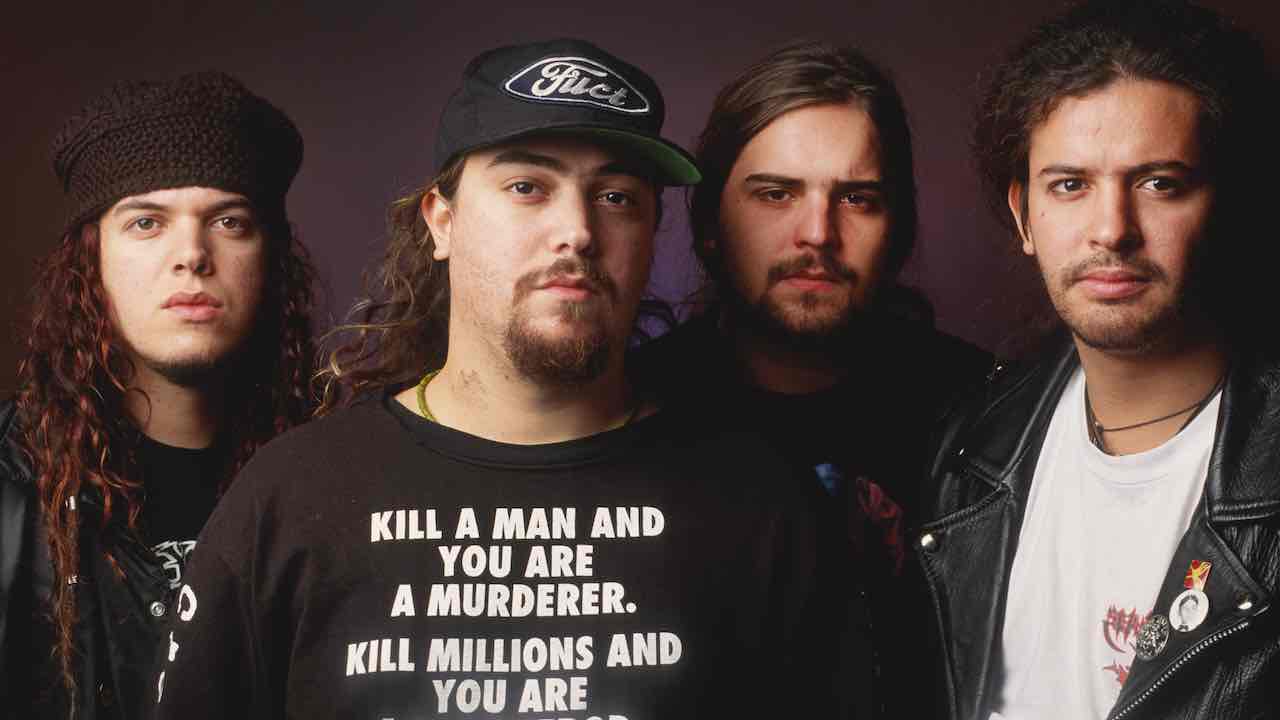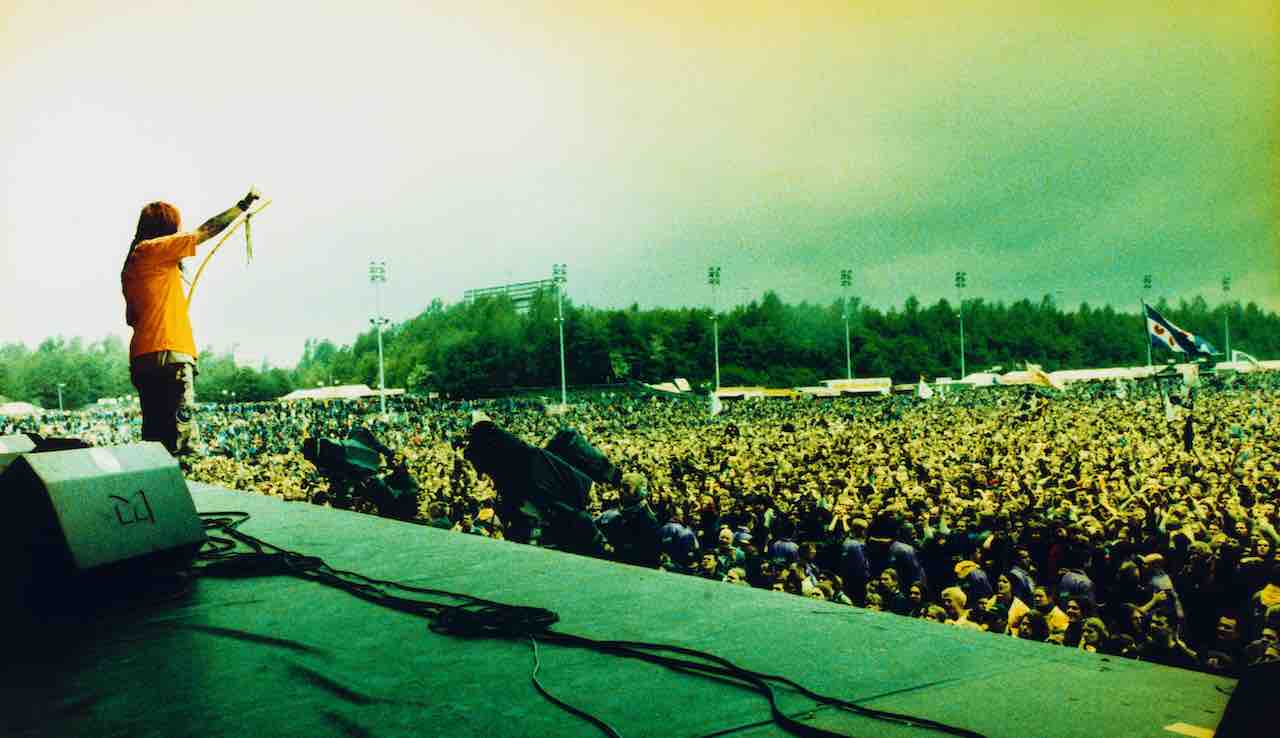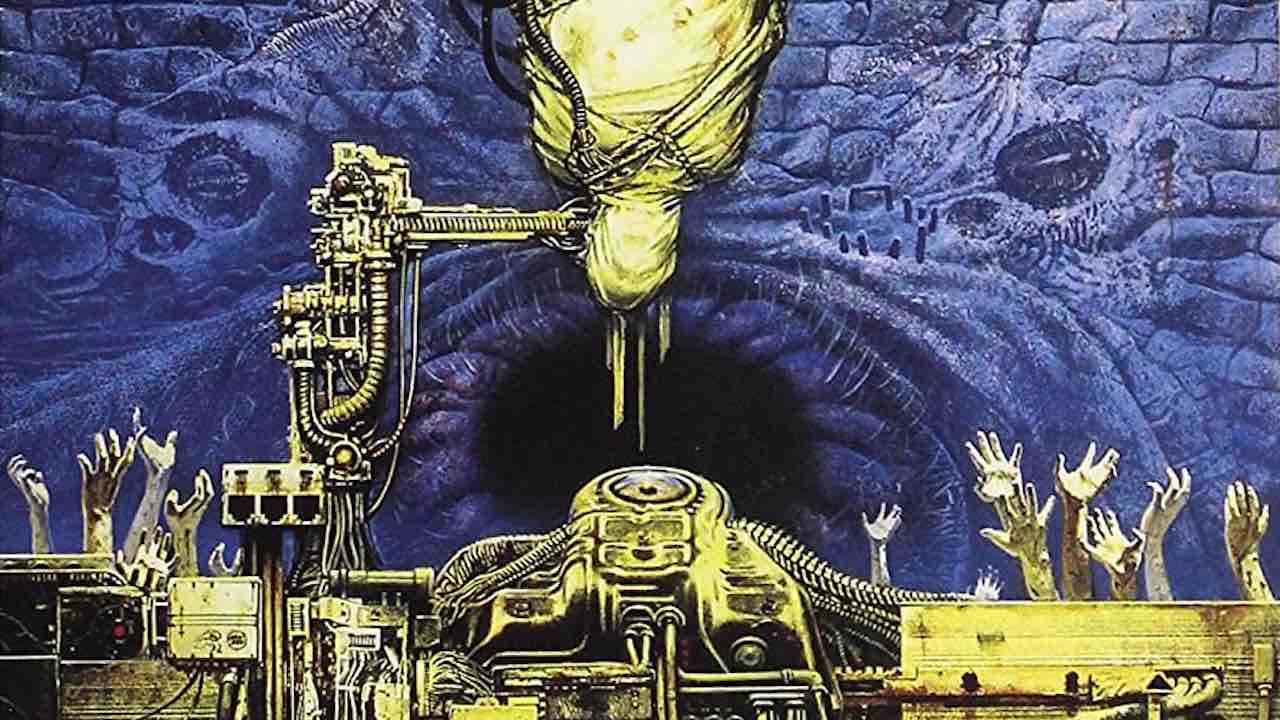There are moments in history, which define bands – and there are albums, which define moments. In 93, Sepultura were ready, willing and certainly able to make the leap from cult status to being major players on the metal scene.
The build-up to Chaos AD had been steady. Sepultura broke out of Brazil with 89’s Beneath The Remains. Their third album, it marked the point at which they got international recognition – the Seps made their live debut in the UK that year at The Marquee in London, supporting Sodom – and in ’91 the band took another step forward with Arise.
“It was the first time we’d recorded outside of Brazil,” recalls guitarist Andreas Kisser. “We went to Florida and worked with producer Scott Burns. It was a real learning experience, but we weren’t at all happy with the mix. So we got in Andy Wallace to remix it. We gave him one track to see what he made of it, and we were so impressed, he got the whole album.”
- Roots Bloody Roots: the inside story of the 12 months that tore Sepultura apart
- Max Cavalera: 10 Albums That Changed My Life
- The year Roadrunner Records became an unstoppable force
- Kreator’s Pleasure To Kill: the brutal 80s masterpiece that put Euro thrash on the map
This was to prove a crucial decision for Sepultura, because if Arise established the band’s rapidly rising cult stature, then what they had to do with the next album was definitely take what would have to be a significant stride forward if they were to break away from the new breed of thrashers. And the choice of producer was a key factor.
“We all felt that Andy was the right person,” says Max Cavalera, then guitarist/vocalist with the band (the rest of the line-up being the rhythm section of bassist Paulo Jr. and drummer Igor Cavalera). “We were fans of what he’d done before [from Alice In Chains to Run DMC and Slayer], and he just felt like the right person for this project. Everyone agreed on that – ourselves, the label [Roadrunner] and management [Gloria Bujnowski, later to marry Max]. We knew how important this album would be for Sepultura, everything had to be right.”
It was Wallace who decided that the band should relocate to the celebrated Rockfield Studios in South Wales for the recording sessions, giving them a broader international perspective – and one that Kisser feels fitted the new attitude of the band.
“You have to understand that we had spent two years touring with Arise. It was the first time that we’d seen the world, and actually could analyse and understand what it was like being Brazilian outside of the country. We saw Brazil from a different angle – one that changed the way we felt. Even with Arise, we were still writing lyrics that were very heavy metal, very based in fantasy. But now we began to get more social and political. We wrote about things that were going on in our country – the poverty, the repression – because these things made an impact on us. Musically, we’d also developed. We had learnt what worked, and what didn’t, from playing so much live, and getting to know people like Ozzy. We had made the jump from boys to men!
“Andy helped enormously. We learnt so much form him during our time together, not just in terms of studio experience, but he also got us to think more about how we wrote songs.”
Sepultura spent three or four months working on the songs for Chaos AD, the entire band relocating to Phoenix, Arizona. They all knew that this was to be their most challenging and important album to date, and believed they had to give it the maximum attention.
“We went to Phoenix as a group of people,” explains Kisser. “Even our families came down with us. We had to really immerse ourselves in this project, and having everyone and everything we needed around helped us to do just that.”

Out of the writing process came some of the strongest material in the band’s history – hard hitting, powerful, challenging, confrontational. This was Sepultura on a new level. And when they went down to Rockfield, they weren’t just ready, they were focused and vibed in a way that had never previously been obvious.
Inevitably, it was Max Cavalera who seemed to be the fulcrum of the band, the man with the off-the-wall ideas, and the vision to pursue them. For instance, there was the notion of recording in a castle!
“It was Chepstow Castle,” says the frontman. “We stopped off there on the way to Rockfield, and it just seemed to me that the atmosphere and acoustics of the place would be great for recording the percussion on the song Kaiowas. I had no clue how we’d do it, but I told Andy Wallace about my idea, and then left him to work out all the technicalities – and he did! The sound of the song is amazing. I think the people who work at the castle were a bit surprised that a rock band wanted to record there, but they went along with it.”
Kaiowas was just one of the surprises on this record, another being Biotech Is Godzilla, which saw Sepultura collaborate with Dead Kennedys’ Jello Biafra, an icon of the punk movement.
“We had met Jello a little while before,” recalls Cavalera. “He was one of our heroes, and we thought it would be amazing to work with someone like him. I asked him if he’d like to come up with a few song ideas. And what happened was that Jello sent me these on a cassette. There were different songs, and I just chose Biotech Is Godzilla, because the title seemed so perfect – as soon as I saw it I thought that it just spoke of Jello Biafra. Who else would have come up with something like that? So we used that one. And if you listen to the version on Chaos AD you can hear Jello growling at one point.
“We took that straight off the cassette he’d sent me. But when he heard it, Jello contacted me and said, ‘Why did you use that bit from the cassette? That wasn’t meant to go on the record. You should have asked me to do a proper one - I’d have come up with a real one for you!’. But I don’t think it really matters; what Jello Biafra did on the tape worked very well. Maybe it was the spontaneity, but I doubt he could have come up with anything better for us.”
One talking point on this album is the band’s surprise choice of cover: New Model Army’s The Hunt. Exactly why it was chosen leads to a disagreement between Max Cavalera and Andreas Kisser. “It was my idea,” insists Cavalera. “I’d been into the band for a while, and thought we should try something as different as this. There was no particular reason why we went for The Hunt – it was a good choice for us.”
“We were all into New Model Army at the time, not just Max,” retorts Kisser. “Everyone – even our road crew – listened to them. Justin Sullivan had come to see us play in Liverpool, and their drummer [Rob Heaton] had visited us in Brazil. It also seemed like an interesting song for us to do, simply because it was different. We could have done a Black Sabbath or Motörhead song, but that in a way would have been no challenge.”
So, you pay your money and you take your choice – was it Max or the band in general who made that decision? But it wasn’t the only cover the band did during these sessions.
“We also did Black Sabbath’s Symptom Of The Universe,” reveals Kisser. “That wasn’t for the album, but for the Sabbath tribute album Nativity In Black [released in 94]. Strangely, Sabbath themselves were at a studio just down the road from us [recording their 94 album Cross Purposes], so we decided one day to go and visit them; we really wanted to meet them. But when we got there, they were nowhere to be seen. But we did leave with a load of guitar picks that I, er, stole from the studio!”
“We really did want to get Tony Iommi to guest on our version of Symptom Of The Universe,” says Kisser. “We’d this plan for him to play the acoustic solo at the end of the track. But he just wasn’t available, so in the end I did it myself – and I don’t think I did a bad job!”
But Symptom… was never intended for this album. And meanwhile, back at Rockfield, the band had a bit of a dilemma…
“We didn’t have a title for the album,” recalls Max Cavalera. “We had left it right to the last minute, and still nothing came to mind. It got to a point when the label [Roadrunner] were getting the artwork ready and still we didn’t have a clue what to call the record. Eventually, I was told that unless I came up with something almost immediately, they would make the title decision for me – and call it Refuse/Resist [the first song on the record]! That just never would have done. It was all wrong for an album title. Chaos AD summed everything up.”

“At one time, there was a real confusion with that Chaos AD title,” adds Kisser. “People actually thought that was the title of Refuse/Resist [the term ‘chaos AD’ does occur in the lyrics]. I’m not sure where Max originally got the title from. I think there might also be a band around called Chaos AC… whatever, it seemed to fit perfectly. The world was in a chaotic state then, and now. We had also seen a major penitentiary riot in Brazil, and the way that the police cracked down on ordinary people on the streets. We saw Brazil for the first time as a police state. As I said before, we had our eyes opened by seeing Brazil from the outside, and we were alarmed at the chaos.”
When it was finally finished, the band knew they’d achieved something momentous…
“Everything about the album was right,” says Max. “The songs were right, the production was superb, and the mix really gave it punch. We had made the record we needed to make in order to establish ourselves. We all knew that we could never have done better.
But did Sepultura realise just how successful it would become?
“You hope, of course, but that’s all you can do,” continues Cavalera. “It doesn’t matter how good you think an album is, ultimately it’s not your decision. It’s down to the fans. But we knew we’d grown as a band, and there was no going back.”
The album was released with a huge fanfare in October, 93. Roadrunner Records, spared no expense on the launch, hiring the aforementioned Chepstow Castle for a massive party, to which various luminaries from the media and industry were invited to participate in a medieval style banquet. And the fans reacted with equal enthusiasm. The album sold briskly, outstripping previous sales marks across the world. In America, Chaos AD peaked at Number 32 on the Billboard Charts – a huge success. Eventually it would make the gold mark in the States, selling in excess of half- a-million copies – although it would take seven years to reach that landmark. In the UK, the album also achieved gold status, by selling more than 100,000 copies.
For the band it was a vindication of everything they stood far, and the realisation of ambitions which must have seen like far off dreams in those years of struggle in Brazil. “To me, there’s a link between Arise, Chaos AD and Roots,” says Kisser. “We took a huge leap forward on Chaos AD and became an international band. It remains our biggest selling record, and I think if you ask our fans, eight out of 10 would say that this is their favourite album. We still play a lot of the songs in the set, and we always will.”
“I think we proved a point to ourselves as much as anything else,” continues Cavalera. “We never had any doubts in our ability, but getting the chance to work with Andy Wallace, Jello Biafra and also Evan Seinfeld of Biohazard [he co-wrote the song Slave New World] allowed us to step up to a new level.
“I look back at those times and really believe them to be the best we had in Sepultura. We were all on the same wavelength, and the subsequent tour in 94-95 was the best we ever had. The vibe and spirit were just amazing.”
The Chaos AD tour saw the Seps become the first Latin band to play at the Donington Monsters Of Rock festival in 94 (joining the likes of headliners Aerosmith and Pantera). They also broke new ground with the first video from the album, Territory, which was shot in Israel.
Yet, strange as it may seem, this also marked the beginning of the end for the band as fans knew and loved them back then. In 94, Max Cavalera married Seps manager Gloria Bujnowski; he also embarked on a side project with Fudge Tunnel’s Alex Newport called Nailbomb. These two events were to have massive repercussions within the seemingly impregnable Sepultura camp. But all of that lay in the future. At this period in time, the band could bask in effectively reinventing extreme metal for the post-grunge period.
“That was never our intention,” says Cavalera. “But I suppose this was one of the things that happened with Chaos AD. We really were taking metal forward into the 90s. The whole tribal thing became part of our sound, and was something we’d develop further on our next album [96’s Roots], and we found a real tightness of style and sound that had never been there before. People often ask me whether I’m proud of this album. Of course! It opened up so many doors for all of us.”
A quarter-of-a-century years ago, it seemed that Sepultura had indeed come up with a masterpiece. The passing of time has only accentuated its impact. What Reign In Blood was to Slayer and Master Of Puppets has become to Metallica, so Sepultura have the same relationship with Chaos AD. Can there be any higher praise?

